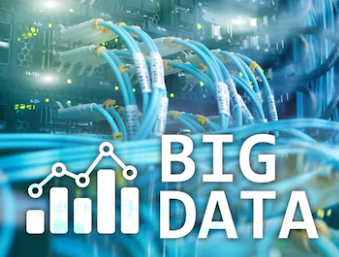Big data tools are software platforms and technologies that help organizations manage, process, and analyze large and complex data sets. These tools enable businesses to uncover insights, patterns, and trends from data, ultimately driving data-driven decision-making and strategic planning. Let’s explore some popular big data tools and how they empower organizations to harness the power of big data.
Types of Big Data Tools
A. Data Storage and Management
- Hadoop: Hadoop is an open-source framework for distributed data storage and processing. It allows organizations to store and manage large data sets across multiple servers, providing scalability and fault tolerance.
- Apache HBase: HBase is a distributed NoSQL database that provides real-time read/write access to large data sets. It integrates with Hadoop and is suitable for handling large volumes of structured and semi-structured data.
- Amazon S3: Amazon Simple Storage Service (S3) is a scalable cloud storage solution that allows organizations to store, retrieve, and manage large data sets. It offers high availability, durability, and security.
B. Data Processing and Analytics
- Apache Spark: Apache Spark is an open-source data processing engine that supports distributed data processing and real-time analytics. It offers high-speed data processing and supports various programming languages, including Python, Java, and Scala.
- Apache Flink: Apache Flink is an open-source stream processing framework that provides real-time data processing capabilities. It supports stateful computations and event-driven applications.
- Apache Storm: Apache Storm is a real-time stream processing platform that allows organizations to process large streams of data in real-time. It supports complex event processing and fault tolerance.
C. Data Visualization and BI Tools
- Tableau: Tableau is a data visualization and business intelligence (BI) tool that enables organizations to create interactive and shareable dashboards. It supports various data sources and offers intuitive drag-and-drop functionality.
- Power BI: Microsoft Power BI is a data visualization and BI tool that provides businesses with powerful analytics and reporting capabilities. It integrates seamlessly with other Microsoft products and supports real-time data analysis.
- Qlik: Qlik is a BI tool that offers data visualization, analytics, and reporting capabilities. It supports self-service data exploration and provides organizations with actionable insights.
D. Machine Learning and AI Tools
- TensorFlow: TensorFlow is an open-source machine learning framework developed by Google. It supports various machine learning algorithms and allows organizations to build and train models for big data analytics.
- PyTorch: PyTorch is an open-source machine learning library developed by Facebook. It provides a flexible and dynamic approach to building and training models and is popular for deep learning applications.
- Scikit-learn: Scikit-learn is an open-source machine learning library for Python. It offers a wide range of machine learning algorithms and tools for data preprocessing, model training, and evaluation.
E. Data Ingestion and Integration
- Apache Kafka: Apache Kafka is a distributed streaming platform that allows organizations to ingest, store, and process large volumes of real-time data. It supports data integration across multiple systems and applications.
- Apache NiFi: Apache NiFi is an open-source data integration tool that automates data flow across various systems. It supports data transformation, enrichment, and routing.
- Talend: Talend is a data integration tool that offers capabilities for data extraction, transformation, and loading (ETL). It supports various data sources and provides easy-to-use data integration workflows.
Conclusion
Big data tools empower organizations to manage, process, and analyze large and complex data sets efficiently. By leveraging tools such as Hadoop, Spark, Tableau, and TensorFlow, businesses can uncover valuable insights from big data and make data-driven decisions. As big data continues to play a crucial role in today’s digital landscape, organizations that adopt and leverage these tools will gain a competitive advantage and drive innovation and growth.
